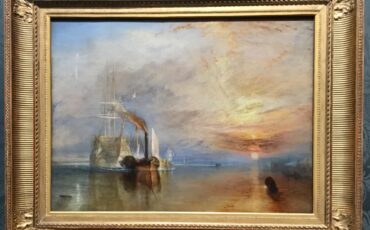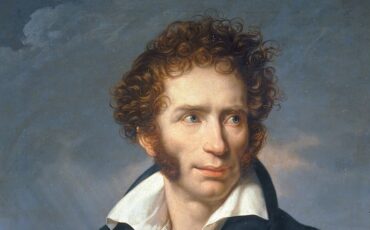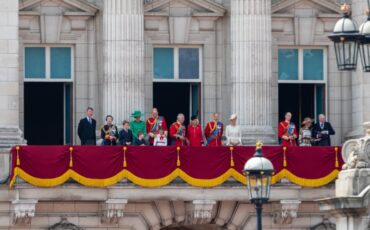Blog
Blog Posts

JMW Turner: London-Born Master of Romantic Landscape and History Painting
The collector William Beckford said of Turner: ‘He paints now as if his brains and imagination were mixed up on his palette with soapsuds and lather.’ Whether insult or compliment, it’s a great description of this Romantic artist who raised humble landscape painting to the level of intellectual history painting.
Read more
V&A East Storehouse: The Victoria and Albert Museum’s Groundbreaking New Venue in London’s Olympic Park
The Victoria and Albert museum has done it again! On 31 May, the new V&A East Storehouse opened to the public, unveiling a new venue with a collection of over 250,000 objects, set in the ultimate Ikea display but, needless to say, with a degree of sophistication that only the Victoria & Albert can muster.
Read more
Top 10 Facts About The Tower Of London
The Tower of London located on the north bank of the River Thames in central London is a top 10 London tourist attraction. Visitors are mainly drawn to the Tower of London to see the spectacular display of The Crown Jewels, part of the Royal Collection and still regularly used by His Majesty The King.
Read more
The Horse Guards in Whitehall: A Closer Look at London’s Mounted Regiments and Their Timeless Traditions
The Household Cavalry regiment, the soldiers who stand guard on horseback in Whitehall are made up of two main groups: the Life Guards and the Blues and Royals. Today they make up just one regiment but each has its own identity, traditions, colonels and uniform. The Blues and Royals and the Life Guard can be seen in Whitehall between 11am and 4pm every day and many visitors to London like to have their photograph taken next to the mounted soldiers. Be careful, however. As the signs nearby say, horses can both bite and kick.
Read more
London’s New Super Sewer and a Tunnel Under the Thames
London’s five billion pound Super Sewer is now fully connected and promises a cleaner, healthier River Thames. The 150-year-old sewer network has struggled to cope with the twin challenges of an increase in the population it serves in the capital (from four million people when it was built to over nine million today) together with climate change. With rainfall overwhelming the system, it sometimes discharges into the Thames. With the Super Sewer fully connected, 95% of those spills are stopped.
Read more
Ugo Foscolo in London: An Exile of the Italian Revolution
Born in 1778 in Zakynthos (Zante in Venetian), a Greek island that was then a Venetian possession, Ugo Foscolo was the son of an Italian father and a Greek mother. Following his father’s death, the family moved to Venice, where he learned Italian and completed his studies at the University of Padua. He joined intellectual circles and admired Napoleon, even siding with his army.
Read more
The Queen Of Crime, Agatha Christie in London
Who is the best-selling writer in history after Shakespeare and the Bible? The answer is Agatha Christie who was born in Devon in 1890 but whose stories often feature London and who wrote what is the capital’s (and the world’s) longest-running play The Mousetrap, which is still playing at Saint Martin’s theatre sixty-five years after it opened. One of the original cast was the late Sir Richard Attenborough, who was paid partly with a share of rights from the play. These were never expected to be worth much but later in his career he was able to sell them to help finance his film about the life of Mahatma Gandhi starring Sir Ben Kingsley.
Read more
Musical Theatre in London: From Classics to Contemporary Hits
Going to the theatre has always been an important part of any trip to London. Not only does the city boast some of the great theatres but ticket prices are usually reasonable. It is also home to the world’s longest-running play, The Mousetrap by Agatha Christie. The story has been at St Martin’s Theatre for over seventy years. London also hosts the world’s two longest-running musicals. Les Miserables and The Phantom of the Opera have been running on the London stage for nearly forty years. Les Mis, as it is commonly known, celebrates its fortieth birthday in October 2025, and Phantom passes the forty-year mark a year later.
Read more
The Michelin Guide to London: How the Star System Shapes the City’s Dining Scene
Are you looking for somewhere special to eat when you come to London? The Michelin star system is considered the gold standard by which eateries are judged. All Michelin inspectors are anonymous and many are unknown even to the company’s directors. They are not allowed to tell their parents what they do in case these parents boast about it and the secret is revealed. They are anonymous and thorough, paying for their own meals and claiming the cost back from the company later so they are completely unbribable.
Read more
William Ernest Henley, ‘The Unwilling Pirate’ at St Paul’s Cathedral in London
St Paul’s Cathedral is often second choice when it comes to competing against Westminster Abbey. Visitors to London, inquisitive to know about the traditions of royalty, are not going to want to see celebrities of earlier times unless it is Churchill, Lady Diana’s wedding or Margaret Thatcher. For most Americans, the American Chapel is the draw – they are patriotic and that is the bait on the hook!
Read more
The Linnean Society at Burlington House in London
The Linnean Society is one of a number of learned societies that have made Burlington House their home. It was founded in 1788 by the amateur botanist Sir James Edward Smith who, spurred on by the President of the Royal Society, Sir Joseph Banks, purchased the natural history collection of the Swedish naturalist Carl Linnaeus, who is known as the father of taxonomy – the classification and naming of biological organisms based on shared characteristics.
Read more
British Royal Family Finances: How is the Royal Family Funded?
The Royal Family of the United Kingdom is financed in a number of different ways. Its main source of income is the Sovereign Grant (the Civil List until 2012), which currently costs £86.3 million a year. This comes in the form of a grant from the government that meets the costs of the royal residences, staffing, travel and state visits, public engagements, and official entertainment.
Read more


